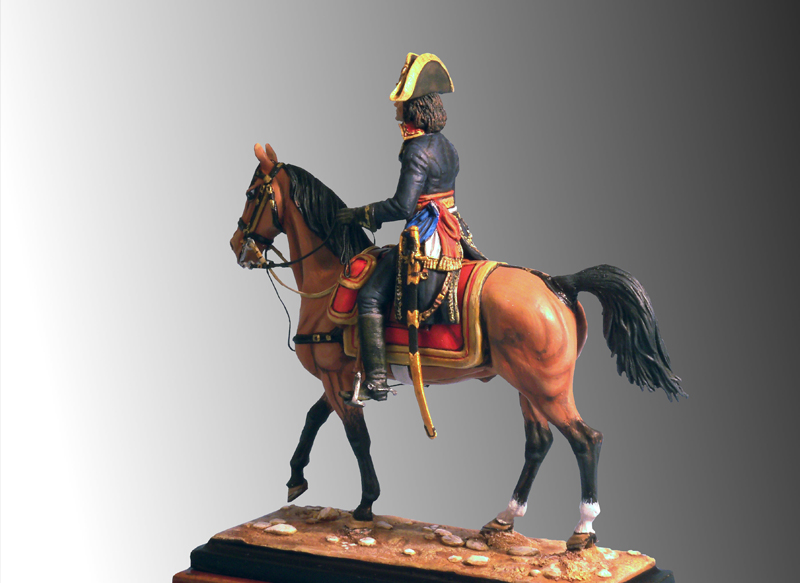Bonaparte, already appointed commander of the army, successively defeated four Austrian generals, whose troops outnumbered the French, and he forced Austria to surrender. The resulting Treaty of Campoformio gave France control over most of northern Italy, as well as of the Netherlands and the Rhine area. A secret clause promised to grant Venice to Austria. Thus, Bonaparte marched against Venice and occupied it, which put an end to more than 1000 years of independence. Later, at the end of 1797, Bonaparte organized the territories occupied in Italy under what became known as the Cisalpine Republic.
The figure shows Napoleon at 28 years of age, when he was at the peak of his campaigns in Italy. Being young for the position, he is presented as slim and narrow-shouldered, of medium height (1), and having loose, straight hair, and a receding hairline. He is wearing a simple blue coat, and only the big cocked hat displaying a cockade, the sash and the saber identify him as an officer. Nothing else reveals his high rank. He is riding a roan medium-sized French horse. It was not until this campaign that Napoleon was able to ride his own horses, of which he lost five individuals in different battles.
NOTE (1)
A lot has been said in the last two centuries about Napoleon’s height. Recent evidence suggests the Emperor was actually 1.69m tall, which is slightly higher than he had been previously thought. In our view, the common belief that Napoleon was short results from two different facts. On the one hand, the grenadiers on foot of his Imperial Guard, who he always made accompany him, were required to be at least 1.78m tall, and the mounted Chasseurs of the Imperial Guard at least 1.70m tall. Thus, the military men who often accompanied Napoleon were taller than him, and so he inevitably look smaller next to them.
On the other hand, after Napoleon’s death, in the autopsy conducted by his personal physician, Francesco Antommarchi, it was determined that Bonaparte was “5/2” tall. Nowadays this figure is believed to refer to the French measure 5 pieds 2 pouces, which is equivalent to 5 ft. 6 ½ inch, that is 1.69m. This confusion, resulting from the misinterpretation of the French measure of pouce (at the time corresponding to 2.70cm) as English inches (2.54cm), lies at the core of the false belief that Napoleon was a short man.








Reviews
There are no reviews yet.